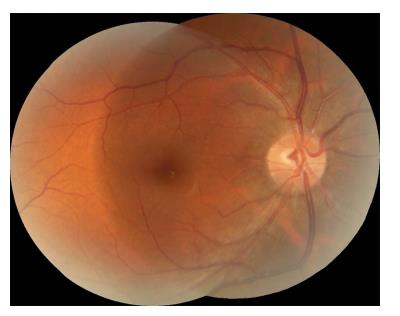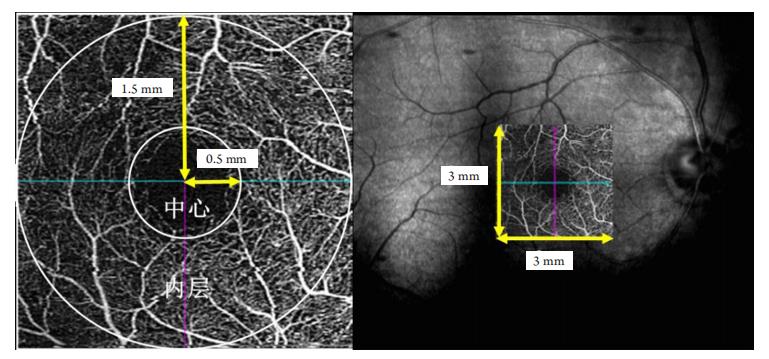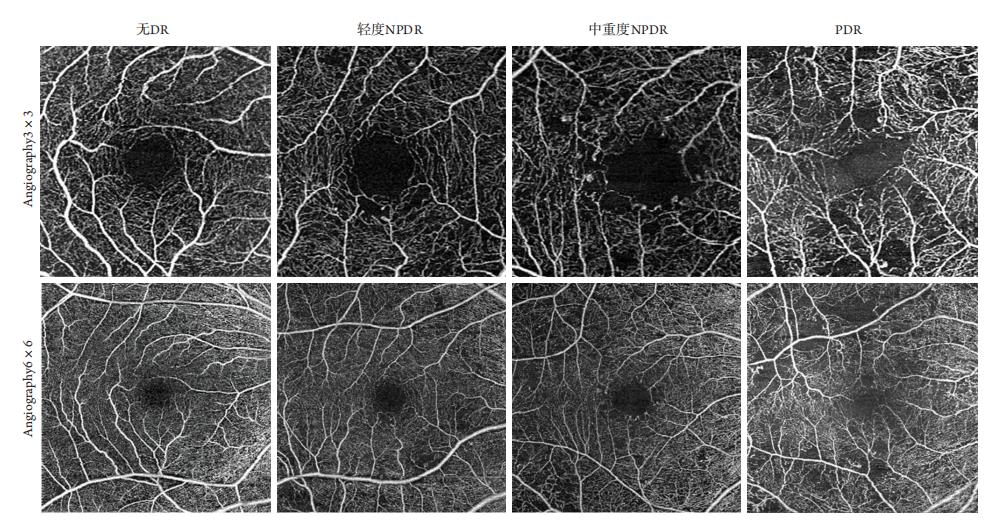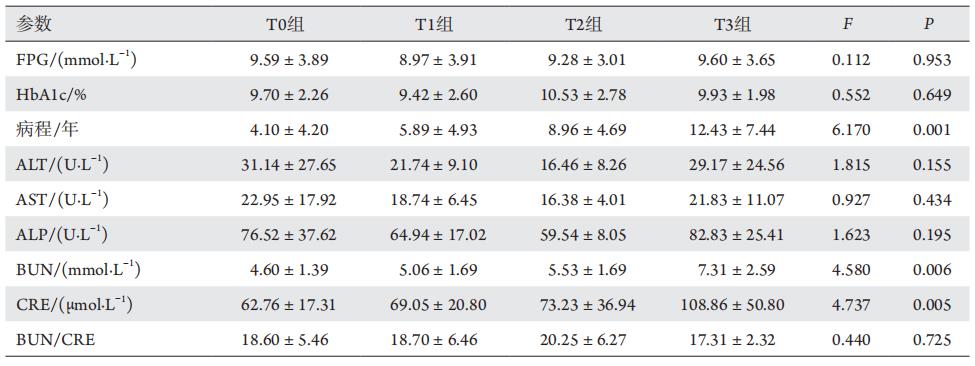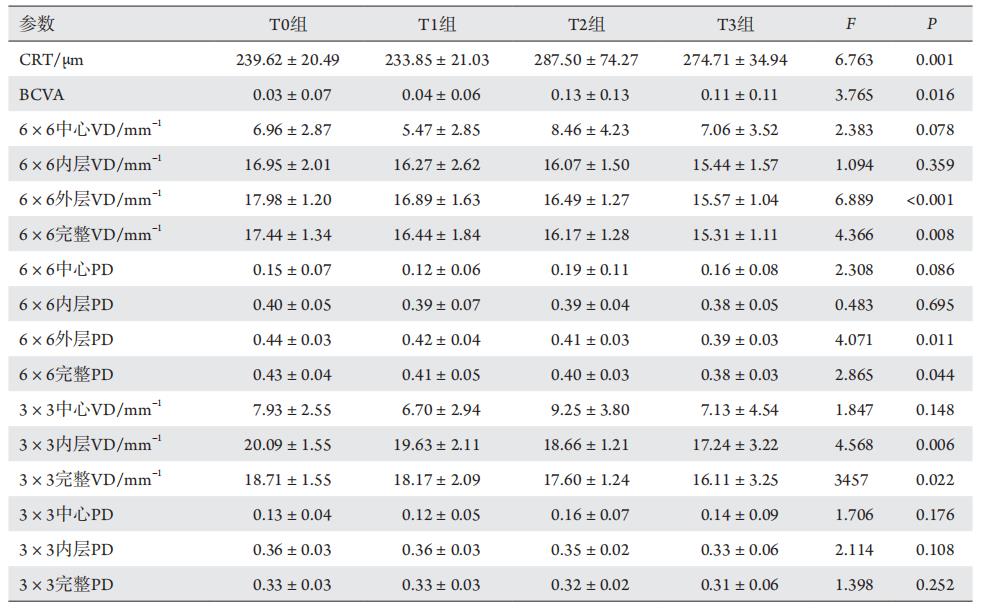1、Sun H, Saeedi P, Karuranga S, et al. IDF Diabetes Atlas: Global,
regional and country-level diabetes prevalence estimates for 2021 and
projections for 2045[ J]. Diabetes Res Clin Pract, 2022, 183: 109119.Sun H, Saeedi P, Karuranga S, et al. IDF Diabetes Atlas: Global,
regional and country-level diabetes prevalence estimates for 2021 and
projections for 2045[ J]. Diabetes Res Clin Pract, 2022, 183: 109119.
2、Teo ZL, Tham YC, Yu M, et al. Global prevalence of diabetic
retinopathy and projection of burden through 2045: systematic
review and meta-analysis[ J]. Ophthalmology, 2021, 128(11):
1580-1591.Teo ZL, Tham YC, Yu M, et al. Global prevalence of diabetic
retinopathy and projection of burden through 2045: systematic
review and meta-analysis[ J]. Ophthalmology, 2021, 128(11):
1580-1591.
3、Cheyne CP, Burgess PI, Broadbent DM, et al. Incidence of sight�threatening diabetic retinopathy in an established urban screening
programme: An 11-year cohort study[ J]. Diabet Med, 2021, 38(9):
e14583.Cheyne CP, Burgess PI, Broadbent DM, et al. Incidence of sight�threatening diabetic retinopathy in an established urban screening
programme: An 11-year cohort study[ J]. Diabet Med, 2021, 38(9):
e14583.
4、Kornblau IS, El-Annan JF. Adverse reactions to fluorescein angiography:
A comprehensive review of the literature[ J]. Surv Ophthalmol, 2019,
64(5): 679-693.Kornblau IS, El-Annan JF. Adverse reactions to fluorescein angiography:
A comprehensive review of the literature[ J]. Surv Ophthalmol, 2019,
64(5): 679-693.
5、Sun Z, Yang D, Tang Z, et al. Optical coherence tomography
angiography in diabetic retinopathy: an updated review[ J]. Eye (Lond),
2021, 35(1): 149-161.Sun Z, Yang D, Tang Z, et al. Optical coherence tomography
angiography in diabetic retinopathy: an updated review[ J]. Eye (Lond),
2021, 35(1): 149-161.
6、Gildea D. The diagnostic value of optical coherence tomography
angiography in diabetic retinopathy: a systematic review[ J]. Int
Ophthalmol, 2019, 39(10): 2413-2433.Gildea D. The diagnostic value of optical coherence tomography
angiography in diabetic retinopathy: a systematic review[ J]. Int
Ophthalmol, 2019, 39(10): 2413-2433.
7、Akil H, Karst S, Heisler M, et al. Application of optical coherence
tomography angiography in diabetic retinopathy: a comprehensive
review[ J]. Can J Ophthalmol, 2019, 54(5): 519-528.Akil H, Karst S, Heisler M, et al. Application of optical coherence
tomography angiography in diabetic retinopathy: a comprehensive
review[ J]. Can J Ophthalmol, 2019, 54(5): 519-528.
8、Zhao Q, Yang WL, Wang XN, et al. Repeatability and reproducibility
of quantitative assessment of the retinal microvasculature using
optical coherence tomography angiography based on optical
microangiography[ J]. Biomed Environ Sci, 2018, 31(6): 407-412.Zhao Q, Yang WL, Wang XN, et al. Repeatability and reproducibility
of quantitative assessment of the retinal microvasculature using
optical coherence tomography angiography based on optical
microangiography[ J]. Biomed Environ Sci, 2018, 31(6): 407-412.
9、中华医学会眼科学会眼底病学组. 我国糖尿病视网膜病变临床
诊疗指南(2014年)[ J]. 中华眼科杂志, 2014, 50(11): 851-865.
Fundus Disease Group, Chinese Ophthalmological Society. Clinical
diagnosis and treatment guidelines for diabetic retinopathy in China
(2014)[ J]. Chinese Journal of Ophthalmology, 2014, 50(11): 851-865.中华医学会眼科学会眼底病学组. 我国糖尿病视网膜病变临床
诊疗指南(2014年)[ J]. 中华眼科杂志, 2014, 50(11): 851-865.
Fundus Disease Group, Chinese Ophthalmological Society. Clinical
diagnosis and treatment guidelines for diabetic retinopathy in China
(2014)[ J]. Chinese Journal of Ophthalmology, 2014, 50(11): 851-865.
10、Shi R, Niu Z, Wu B, et al. Nomogram for the risk of diabetic nephropathy
or diabetic retinopathy among patients with type 2 diabetes mellitus
based on questionnaire and biochemical indicators: A cross-sectional
study[ J]. Diabetes Metab Syndr Obes, 2020, 13: 1215-1229.Shi R, Niu Z, Wu B, et al. Nomogram for the risk of diabetic nephropathy
or diabetic retinopathy among patients with type 2 diabetes mellitus
based on questionnaire and biochemical indicators: A cross-sectional
study[ J]. Diabetes Metab Syndr Obes, 2020, 13: 1215-1229.
11、Yeung L, Wu IW, Sun CC, et al. Early retinal microvascular
abnor malit ies in pat ients w ith chronic k idney di sease[ J].
Microcirculation, 2019, 26(7): e12555.Yeung L, Wu IW, Sun CC, et al. Early retinal microvascular
abnor malit ies in pat ients w ith chronic k idney di sease[ J].
Microcirculation, 2019, 26(7): e12555.
12、Gupta M, Rao IR, Nagaraju SP, et al. Diabetic retinopathy is a predictor
of progression of diabetic kidney disease: A systematic review and
meta-analysis[ J]. Int J Nephrol, 2022, 2022: 3922398.Gupta M, Rao IR, Nagaraju SP, et al. Diabetic retinopathy is a predictor
of progression of diabetic kidney disease: A systematic review and
meta-analysis[ J]. Int J Nephrol, 2022, 2022: 3922398.
13、Kushner-Lenhoff S, Kogachi K, Mert M, et al. Capillary density and
caliber as assessed by optical coherence tomography angiography may
be significant predictors of diabetic retinopathy severity[ J]. PLoS One,
2022, 17(1): e0262996.Kushner-Lenhoff S, Kogachi K, Mert M, et al. Capillary density and
caliber as assessed by optical coherence tomography angiography may
be significant predictors of diabetic retinopathy severity[ J]. PLoS One,
2022, 17(1): e0262996.
14、Zhang B, Chou Y, Zhao X, et al. Early detection of microvascular
impairments with optical coherence tomography angiography in
diabetic patients without clinical retinopathy: A meta-analysis[ J]. Am J
Ophthalmol, 2021, 222: 226-237.Zhang B, Chou Y, Zhao X, et al. Early detection of microvascular
impairments with optical coherence tomography angiography in
diabetic patients without clinical retinopathy: A meta-analysis[ J]. Am J
Ophthalmol, 2021, 222: 226-237.
15、Custo Greig E, Brigell M, Cao F, et al. Macular and peripapillary optical
coherence tomography angiography metrics predict progression in
diabetic retinopathy: a sub-analysis of TIME-2b study data[ J]. Am J
Ophthalmol, 2020, 219: 66-76.Custo Greig E, Brigell M, Cao F, et al. Macular and peripapillary optical
coherence tomography angiography metrics predict progression in
diabetic retinopathy: a sub-analysis of TIME-2b study data[ J]. Am J
Ophthalmol, 2020, 219: 66-76.
16、Palma F, Camacho P. The role of optical coherence tomography
angiography to detect early microvascular changes in diabetic
retinopathy: a systematic review[ J]. J Diabetes Metab Disord, 2021,
20(2): 1957-1974.Palma F, Camacho P. The role of optical coherence tomography
angiography to detect early microvascular changes in diabetic
retinopathy: a systematic review[ J]. J Diabetes Metab Disord, 2021,
20(2): 1957-1974.
17、Boned-Murillo A, Albertos-Arranz H, Diaz-Barreda MD, et al. Optical
coherence tomography angiography in diabetic patients: A systematic
review[ J]. Biomedicines, 2021, 10(1): 88.Boned-Murillo A, Albertos-Arranz H, Diaz-Barreda MD, et al. Optical
coherence tomography angiography in diabetic patients: A systematic
review[ J]. Biomedicines, 2021, 10(1): 88.
18、Laotaweerungsawat S, Psaras C, Liu X, et al. OCT angiography
assessment of retinal microvascular changes in diabetic eyes in an urban
safety-net hospital[ J]. Ophthalmol Retina, 2020, 4(4): 425-432.Laotaweerungsawat S, Psaras C, Liu X, et al. OCT angiography
assessment of retinal microvascular changes in diabetic eyes in an urban
safety-net hospital[ J]. Ophthalmol Retina, 2020, 4(4): 425-432.
19、Alam M, Zhang Y, Lim JI et al. Quantitative optical coherence
tomography angiography features for objective classification and
staging of diabetic retinopathy[ J]. Retina, 2020, 40(2): 322-332.Alam M, Zhang Y, Lim JI et al. Quantitative optical coherence
tomography angiography features for objective classification and
staging of diabetic retinopathy[ J]. Retina, 2020, 40(2): 322-332.
20、Yang JY, Wang Q, Yan YN, et al. Microvascular retinal changes in
pre-clinical diabetic retinopathy as detected by optical coherence
tomographic angiography[ J]. Graefes Arch Clin Exp Ophthalmol,
2020, 258(3): 513-520.Yang JY, Wang Q, Yan YN, et al. Microvascular retinal changes in
pre-clinical diabetic retinopathy as detected by optical coherence
tomographic angiography[ J]. Graefes Arch Clin Exp Ophthalmol,
2020, 258(3): 513-520.
21、Karst SG, Heisler M, Lo J, et al. Evaluating signs of microangiopathy
secondary to diabetes in different areas of the retina with swept source
OCTA[ J]. Invest Ophthalmol Vis Sci, 2020, 61(5): 8.Karst SG, Heisler M, Lo J, et al. Evaluating signs of microangiopathy
secondary to diabetes in different areas of the retina with swept source
OCTA[ J]. Invest Ophthalmol Vis Sci, 2020, 61(5): 8.
22、Elnahry AG, Elnahry GA. Optical coherence tomography angiography
of macular perfusion changes after anti-VEGF therapy for diabetic
macular edema: A systematic review[ J]. J Diabetes Res, 2021,
2021: 6634637.Elnahry AG, Elnahry GA. Optical coherence tomography angiography
of macular perfusion changes after anti-VEGF therapy for diabetic
macular edema: A systematic review[ J]. J Diabetes Res, 2021,
2021: 6634637.
23、Alagorie AR, Nittala MG, Velaga S, et al. Association of intravitreal
aflibercept with optical coherence tomography angiography vessel
density in patients with proliferative diabetic retinopathy: A secondary
analysis of a randomized clinical trial[ J]. JAMA Ophthalmol, 2020,
138(8): 851-857.Alagorie AR, Nittala MG, Velaga S, et al. Association of intravitreal
aflibercept with optical coherence tomography angiography vessel
density in patients with proliferative diabetic retinopathy: A secondary
analysis of a randomized clinical trial[ J]. JAMA Ophthalmol, 2020,
138(8): 851-857.
24、Moosavi A, Figueiredo N, Prasanna P, et al. Imaging features of vessels
and leakage patterns predict extended interval aflibercept dosing using
ultra-widefield angiography in retinal vascular disease: findings from
the PERMEATE study[ J]. IEEE Trans Biomed Eng, 2021, 68(6):
1777-1786.Moosavi A, Figueiredo N, Prasanna P, et al. Imaging features of vessels
and leakage patterns predict extended interval aflibercept dosing using
ultra-widefield angiography in retinal vascular disease: findings from
the PERMEATE study[ J]. IEEE Trans Biomed Eng, 2021, 68(6):
1777-1786.
25、Elnahry AG, Abdel-Kader AA, Habib AE, et al. Review on recent trials
evaluating the effect of intravitreal injections of anti-VEGF agents
on the macular perfusion of diabetic patients with diabetic macular
edema[ J]. Rev Recent Clin Trials, 2020, 15(3): 188-198.Elnahry AG, Abdel-Kader AA, Habib AE, et al. Review on recent trials
evaluating the effect of intravitreal injections of anti-VEGF agents
on the macular perfusion of diabetic patients with diabetic macular
edema[ J]. Rev Recent Clin Trials, 2020, 15(3): 188-198.

